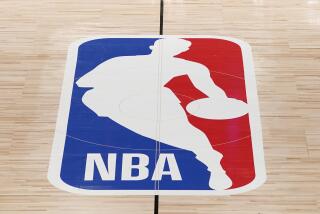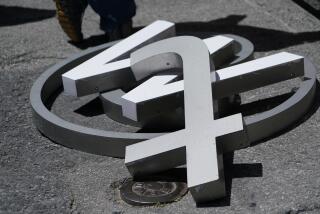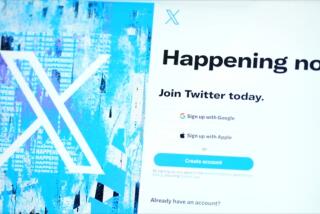AROUND HOME : The AT&T; Logo
EVIDENTLY, THE magistrate fancied himself an art director. After the breakup of AT&T; in 1983, in which the portion of the conglomerate that kept the AT&T; name separated from the regional telephone companies, U.S. District Judge Harold Green ordered the new, smaller AT&T; to stop using the familiar bell-in-a-circle logo. In stepped designer Saul Bass, of Los Angeles-based Saul Bass/Herb Yeager Associates, with a new company logo. Bass had previously created symbols for corporate giants such as Warner Communications (the blobby-looking “W”), Quaker Oats and Coca-Cola.
In 1969, Bass had spruced up the old bell-in-circle trademark (nearly as ancient as Alexander Graham Bell’s invention itself) with a cleaner, crisper bell symbol. Intended to counter a public perception of old Ma Bell as stodgy and stuffy, his redesign was a stunning success. Though the existing logo had boasted an enviable public recognition rating of 79%, Bass’ redesign, two years later, rated an astonishing 93%. Bass put that figure in perspective in a 1985 interview: “United Airlines, whose symbol we also designed, is very pleased with 46% public awareness.”
The pre-divestiture Bell logo was a tough act to follow, but Bass’ lightning, it seems, has struck twice. The new AT&T; logo comprises a blue sphere with white striations of differing width and curvature, seemingly pulsating on the printed page. The logo resembles a globe with lines of latitude--or are they telephone cables? No matter, it makes an apt image for a firm that transmits electronic information around the world.
Beyond such literal connotations, Bass’ symbol shrewdly plays on our subconscious associations. For, as graphic designer Veronica Napoles writes in Corporate Identity Design, consumers associate round or oval symbols with organic, nurturing qualities. Bass’ AT&T; logo didn’t lose a Ma Bell, it gained an earth mother.
More to Read
The biggest entertainment stories
Get our big stories about Hollywood, film, television, music, arts, culture and more right in your inbox as soon as they publish.
You may occasionally receive promotional content from the Los Angeles Times.










